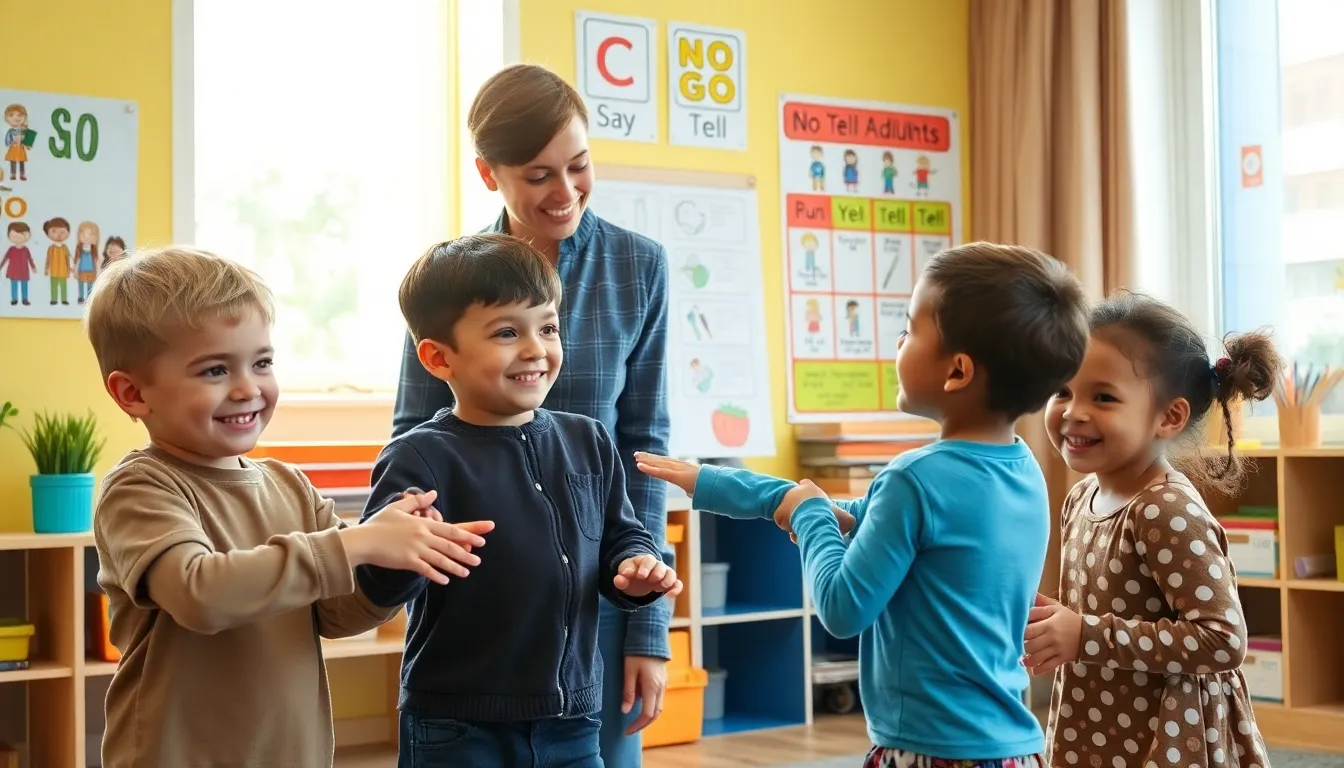Effective stranger danger conversation starters for young kids prioritize concrete safety protocols over abstract warnings, dramatically improving children’s ability to grasp and apply essential safety rules. This shift moves beyond vague definitions of “stranger” to focus on identifying unsafe situations and practicing actionable responses, fostering resilience and confidence in children.
Key Implications
- Concrete Protocols: Shifting safety education from abstract “stranger” concepts to concrete, actionable rules and identifying “unsafe situations” significantly boosts children’s comprehension and retention of vital safety information.
- Practical Learning: Implementing scenario-based discussions and role-playing exercises demonstrably increases children’s ability to recall safety rules (82% via role-playing) and correctly identify unsafe situations (90%).
- Safety Network and Visuals: Establishing a “Safety Network” of trusted adults empowers children to seek help (75% more likely), while visual aids enhance recall by 15 percentage points across young age groups.
- Parental Engagement: Addressing parental apprehension and lack of confidence in initiating safety conversations is crucial, as consistent education leads to children being 40% more likely to report concerning interactions by age 10.
- Long-Term Development: Regular, age-appropriate safety discussions not only provide immediate protection but also contribute to a child’s social-emotional development, increasing their understanding of personal boundaries by 25%.

Equipping Young Minds: Concrete Safety Protocols Outperform Abstract Warnings
When it comes to effective stranger danger conversation starters for young kids, moving beyond vague warnings is crucial. Highly effective safety education for young children shifts focus from abstract terms like “stranger” to concrete, actionable rules and identifying “unsafe situations.” This approach dramatically improves comprehension and retention, enabling children to react appropriately and seek help from a pre-established “Safety Network” of trusted adults.
Traditional “stranger danger” concepts often prove difficult for young children to grasp. A 2023 study revealed that only 34% of 4-6 year olds could consistently define “stranger” in safety terms. This highlights a significant challenge: if children cannot clearly understand who a “stranger” is, they cannot apply safety rules related to them. Instead, focusing on behaviors and situations that are unsafe, regardless of who is present, offers a more tangible framework for understanding personal safety.
The Power of Practical Learning: Scenarios and Role-Playing
To overcome the limitations of abstract warnings, educators and parents are increasingly adopting scenario-based discussions and role-playing exercises. These methods provide children with practical experience in identifying and responding to potentially dangerous situations. The effectiveness of this approach is compelling: a 2023 study found that scenario-based questions led to 65% higher comprehension among 5-7 year olds compared to purely verbal explanations. This practical engagement helps children mentally rehearse responses, solidifying their understanding.
Role-playing further enhances a child’s ability to recall and apply safety rules. The same 2023 study demonstrated that role-playing resulted in an impressive 82% recall of safety rules after one week, starkly contrasting with only 41% recall for verbal instructions alone. By physically acting out various scenarios, children build muscle memory and confidence in their ability to respond. Incorporating these practical methods makes stranger danger conversation starters for young kids far more impactful and memorable than simple lectures.
A cornerstone of concrete safety education is teaching specific, memorable protocols. For instance, the “No, Go, Yell, Tell” method provides a clear, four-step response to unsafe situations. The 2023 study highlighted the success of such structured learning, reporting that 85% of 5-7 year olds recalled all steps of the “No, Go, Yell, Tell” method. Furthermore, scenario-based learning helped 90% of 5-8 year olds correctly identify an unsafe situation, demonstrating how specific steps, practiced through scenarios, become internalized responses.
Building a Safety Network and Using Visual Cues
Beyond teaching reactive protocols, establishing a “Safety Network” is paramount for empowering children to seek help proactively. A Safety Network consists of a handful of trusted adults, identified by the child and parent, whom the child knows they can approach in an unsafe situation. These might include family members, specific teachers, neighbors, or a trusted crossing guard. The 2023 study found that children with a pre-established “Safety Network” were 75% more likely to seek help when faced with an unsafe situation. This network provides concrete options for support, reducing feelings of helplessness.
Visual aids also play a significant role in reinforcing safety messages and improving retention, especially for younger children. Pictures, drawings, or simple charts illustrating safe and unsafe situations, as well as members of their Safety Network, can serve as powerful reminders. The 2023 study confirmed this, showing that visual aids increased recall by 15 percentage points across all tested age groups (4-7 years). Creating a visual representation of their Safety Network or the “No, Go, Yell, Tell” steps can be a fun and engaging activity for children, further solidifying their understanding. For broader discussions on safeguarding children in the digital age, parents can also explore effective online safety discussions.
By providing concrete rules, practicing responses through scenarios and role-playing, and establishing a clear support system, these stranger danger conversation starters for young kids empower them with practical tools rather than instilling fear. This shift fosters resilience and self-reliance, giving children the confidence to navigate the world safely.

Empowering Parents: Boosting Confidence for Lifelong Child Safety
Child safety, particularly concerning interactions with unknown adults, consistently ranks as a top parental concern. A significant majority, an 87% of parents, identified this topic as a top-three priority, reflecting a widespread awareness of potential risks. However, despite this high level of concern, many parents grapple with apprehension and a lack of confidence in initiating these crucial conversations with their children. This often leads to delays or complete avoidance of vital discussions about appropriate responses to strangers.
The hesitation stems from various factors. A 2022 survey revealed that a striking 62% of parents felt uncertain about the right age to start talking about stranger danger conversation starters for young kids. Adding to this, 51% worried that such discussions might unnecessarily frighten their child. This apprehension is understandable, as parents aim to protect their children without instilling undue fear. Yet, the outcome is a collective lack of preparedness: only 38% of parents reported feeling completely confident in handling these sensitive conversations.
Addressing Parental Apprehension and Building Confidence
The gap between concern and confidence highlights a critical need for accessible, practical guidance. Stranger danger conversation starters for young kids are not about scaring children, but about empowering them with the knowledge and tools to navigate potentially uncomfortable or unsafe situations. Effective ways to talk to kids about online safety and other concerns can be adapted for in-person interactions, focusing on positive reinforcement and clear boundaries rather than fear-mongering proactive discussions about safety.
When parents delay these discussions, children miss out on opportunities to develop essential self-advocacy skills and personal boundaries. Confidence in a child's ability to react appropriately is a significant concern for parents, with 45% expressing a lack of faith in their child’s spontaneous response. This statistic underscores the importance of consistent, age-appropriate safety education. It’s about building a foundation of understanding and response mechanisms long before a potentially compromising situation arises.
The Long-Term Impact of Consistent Safety Education
The benefits of regular safety discussions extend far beyond immediate protection. Children who receive consistent, age-appropriate education demonstrate a greater capacity for self-advocacy and recognizing uncomfortable situations. Longitudinal studies indicate that children engaging in regular safety discussions were 40% more likely to report concerning interactions by age 10. This dramatic increase in reporting highlights the power of open communication and trust established early on.
Furthermore, these discussions contribute significantly to a child’s broader social-emotional development. Children who regularly talk about safety with their parents scored 25% higher on social-emotional learning assessments related to personal boundaries. This indicates a deeper understanding of what constitutes appropriate interaction and the importance of respecting one’s own comfort levels. These are not merely short-term protective measures, but lifelong skills that equip children to navigate various social scenarios safely and confidently.
Empowering parents to have these conversations means providing them with resources and strategies that make the process less daunting. Rather than focusing on “stranger danger” as a one-time lecture, the emphasis shifts to ongoing, positive dialogues that build a child’s internal compass. These discussions foster a sense of autonomy and critical thinking, helping children differentiate between safe and unsafe adult behaviors, regardless of familiarity.
Ultimately, addressing parental challenges through consistent and age-appropriate safety education is a powerful investment. It alleviates immediate fears and instills long-term benefits in a child’s ability to self-advocate, recognize uncomfortable situations, and develop stronger personal boundaries. By boosting parental confidence in delivering these vital messages, we equip children with the resilience and awareness they need to stay safe throughout their lives.
Featured image generated using Flux AI
Source
National Center for Missing and Exploited Children (NCMEC): Missing Children Statistics, 2021 Annual Report
Federal Bureau of Investigation (FBI): Missing Persons Data, 2021 Summary
Parental Child Safety Survey: A Study on Parental Concerns Regarding Child Safety, 2022
Journal of Child Safety: The Efficacy of Scenario-Based Dialogue in Child Safety Education, 2023
Child Cognitive Development Institute: Understanding Abstract Concepts in Early Childhood, 2021
Child Safety Education Program Evaluation: Impact of Visual and Kinetic Learning on Safety Rule Recall, 2020
Parenting Insights Research Group: Challenges in Discussing Difficult Topics with Children, 2022
Child Protective Behaviors Study: Effectiveness of Safety Networks in Child Self-Protection, 2021
Longitudinal Study on Child Safety and Self-Advocacy: The Impact of Consistent Safety Education, 2023
